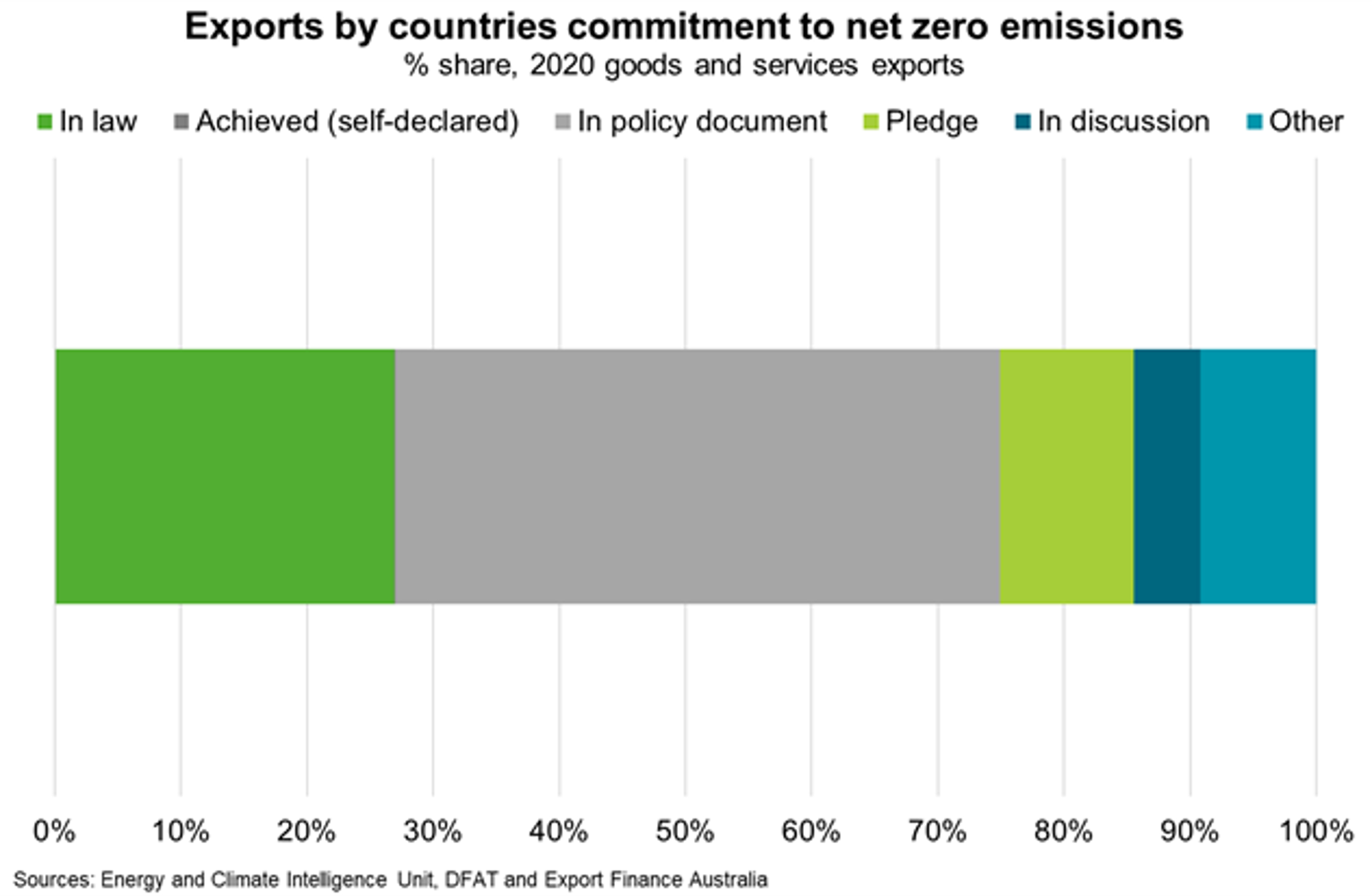Australia—Net zero emissions by 2050 would alter export profile
Around 85% of Australian exports last year went to countries that have set net zero emissions pledges (Chart). The International Energy Agency suggests that the most technically feasible, cost-effective and socially acceptable pathway to reach net zero by 2050 entails fossil fuels falling from 80% of total energy supply in 2020, to just over 20% in 2050. Indeed, over 40 countries pledged to eventually phase-out investment in new coal power generation domestically and internationally at the COP26 climate summit—including South Korea (13% of Australia’s coal exports in FY2021), Vietnam (5%), Netherlands (3%) and Indonesia (2%).
The scenario envisages energy efficiency, wind and solar providing around half of the emissions savings to 2030. They continue to deliver emissions reductions beyond 2030, but the period to 2050 sees increasing electrification, hydrogen use and deployment of carbon capture and storage, for which not all technologies are commercially available today. As such, annual energy sector investment, which averaged US$2.3 trillion globally in recent years, jumps to US$5 trillion by 2030. Greater investment and the transition to clean energy sources will create new export opportunities for Australia, given its plentiful resources, economic capability and trade connectivity. This includes supply of critical minerals into the clean energy supply chain, next generation green technologies (such as green hydrogen and carbon sequestration), renewable energy, and climate resilience products and services.

